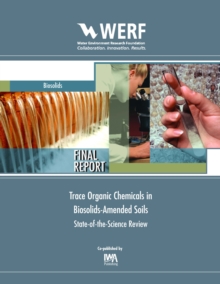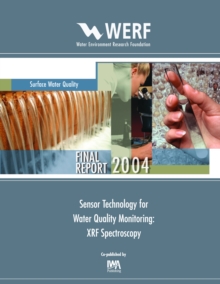
Evaluating Risks and Benefits of Soil Amendments used in Agriculture PDF
by L. H. Moss, E. Epstein, T. Logan, S. D. Frank, K. Scott
Part of the WERF Research Report Series series
Description
Farmers today are faced with an array of products that they can use to improve the fertility of their lands. Organic soil amendments such as biosolids, manures and, to a lesser extent, Municipal Solid Waste (MSW) composts are products that can be used to supplement or replace mineral fertilizers. Many farmers are aware of the benefits that organic products offer, especially in terms of improved crop yields, increased soil fertility, reduced fertilizer costs, and their overall contribution to sustainable agriculture.
Concerns have been raised, however, regarding the safety of organic soil amendments. Depending on the type of product, these can include (but are not limited to) the accumulation of phosphorus and metals in soils, plant uptake of land-applied metals, the contamination of groundwater and soil with organic compounds, and potential health impacts from pathogens and viruses. Although many of these issues have been rigorously researched, data is often published in academic journals and textbooks, and is not necessarily accessible to the public. For all soil amendments, comparative information regarding risks, benefits, advantages, and disadvantages is not always readily available.
Equally critical is the lack of accessible comparative data on soil amendment and mineral fertilizer characteristics and use.Recognizing the need to provide a comparison of these products, the Water Environment Research Foundation (WERF) commissioned this multi-year study of soil amendments, fertilizers and their uses. For the study, the project team performed a comprehensive literature survey, reviewing and compiling the results from nearly 500 documents (primarily from academic journals and texts).
The study generally found that the relative risk to the environment from amendments and fertilizers varies by parameter and shows that known risks from each of the materials studied can be managed.
Moreover, these manageable risks must be carefully weighed against the considerable benefits provided by the land application of amendments and fertilizers. This publication can also be purchased and downloaded via Pay Per View on Water Intelligence Online - click on the Pay Per View icon below
Information
-
Download - Immediately Available
- Format:PDF
- Pages:148 pages
- Publisher:IWA Publishing
- Publication Date:01/11/2002
- Category:
- ISBN:9781780403168
Other Formats
- Paperback / softback from £112.00
Information
-
Download - Immediately Available
- Format:PDF
- Pages:148 pages
- Publisher:IWA Publishing
- Publication Date:01/11/2002
- Category:
- ISBN:9781780403168










